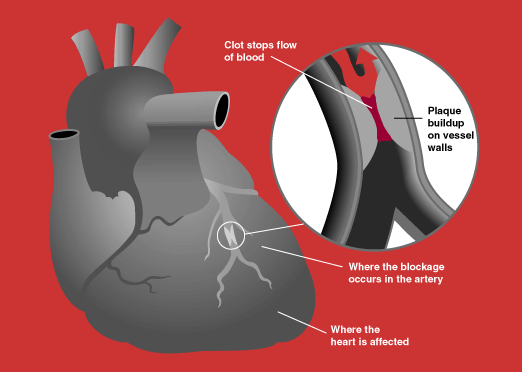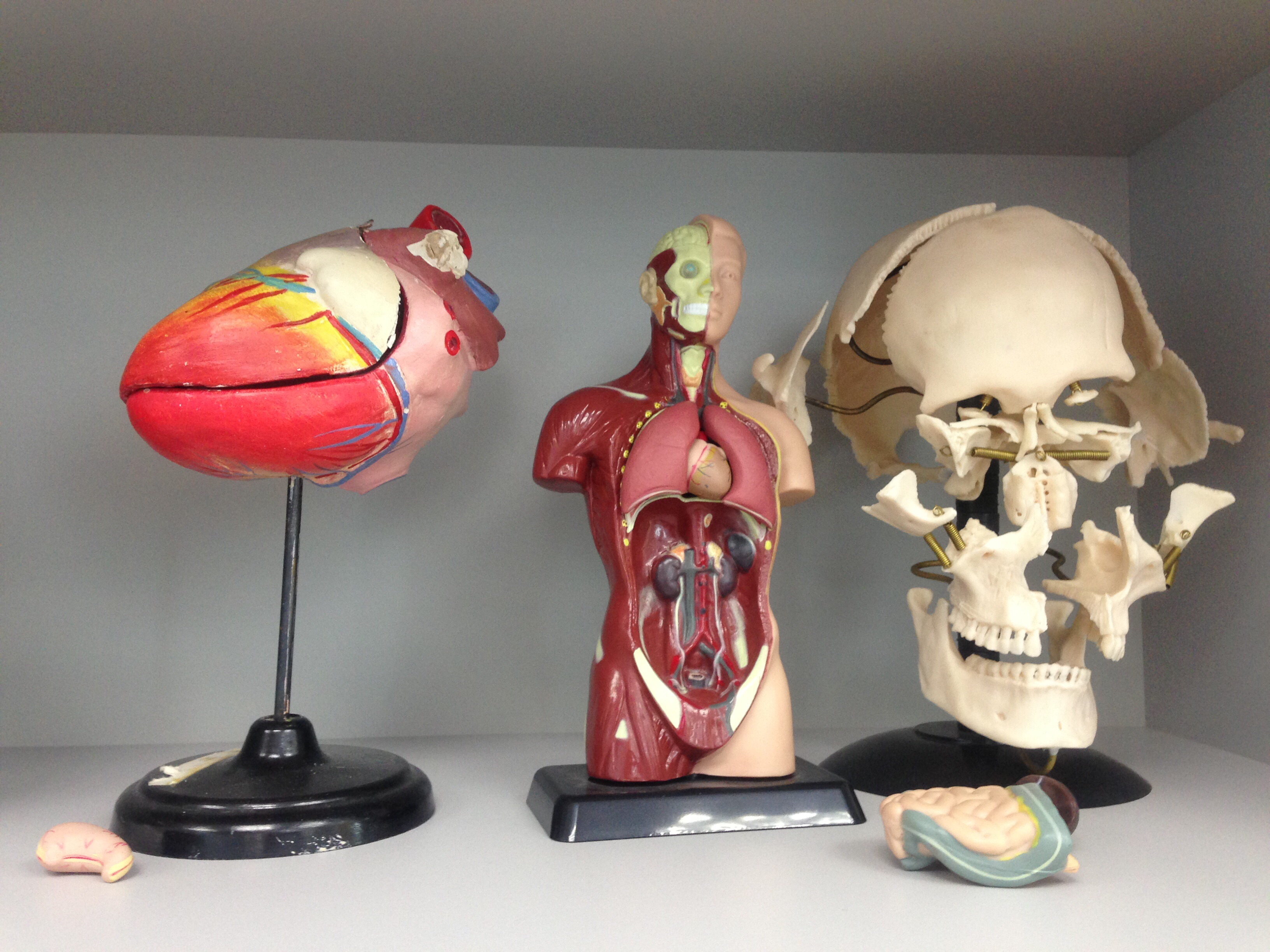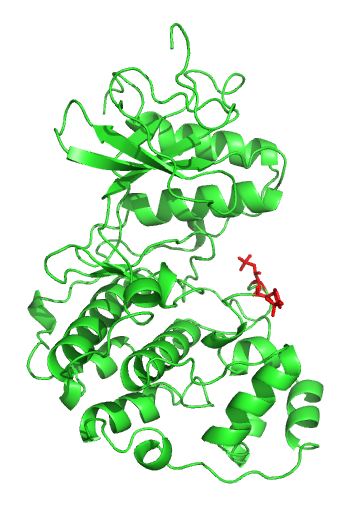|
Cardiofaciocutaneous Syndrome
Cardiofaciocutaneous (CFC) syndrome is an extremely rare genetic disorder, and is one of the RASopathies. It was first described in 1986. It is characterized by the following: *Distinctive facial appearance *Unusually sparse, brittle, curly scalp hair *A range of skin abnormalities from dermatitis to thick, scaly skin over the entire body (generalized ichthyosis) *Heart malformations in over 75% of patients (congenital or appearing later), especially an obstruction of the normal flow of blood from the lower right ventricle of the heart to the lungs (valvar pulmonary stenosis) *Growth delays *Feeding problems associated with severe gastroesophageal reflux disease (GERD) *Foot abnormalities (extra toe or fusion of two or more toes) *Intellectual disability *Failure to thrive Presentation Head Individuals with the disorder usually have distinctive malformations of the craniofacial area including an unusually large head (macrocephaly), prominent forehead, and abnormal narrowing of ... [...More Info...] [...Related Items...] OR: [Wikipedia] [Google] [Baidu] |
Genetic Disorder
A genetic disorder is a health problem caused by one or more abnormalities in the genome. It can be caused by a mutation in a single gene (monogenic) or multiple genes (polygenic) or by a chromosomal abnormality. Although polygenic disorders are the most common, the term is mostly used when discussing disorders with a single genetic cause, either in a gene or chromosome. The mutation responsible can occur spontaneously before embryonic development (a ''de novo'' mutation), or it can be Heredity, inherited from two parents who are carriers of a faulty gene (autosomal recessive inheritance) or from a parent with the disorder (autosomal dominant inheritance). When the genetic disorder is inherited from one or both parents, it is also classified as a hereditary disease. Some disorders are caused by a mutation on the X chromosome and have X-linked inheritance. Very few disorders are inherited on the Y linkage, Y chromosome or Mitochondrial disease#Causes, mitochondrial DNA (due to t ... [...More Info...] [...Related Items...] OR: [Wikipedia] [Google] [Baidu] |
PTPN11
Tyrosine-protein phosphatase non-receptor type 11 (PTPN11) also known as protein-tyrosine phosphatase 1D (PTP-1D), Src homology region 2 domain-containing phosphatase-2 (SHP-2), or protein-tyrosine phosphatase 2C (PTP-2C) is an enzyme that in humans is encoded by the ''PTPN11'' gene. PTPN11 is a protein tyrosine phosphatase (PTP) Shp2. PTPN11 is a member of the protein tyrosine phosphatase (PTP) family. PTPs are known to be signaling molecules that regulate a variety of cellular processes including cell growth, differentiation, mitotic cycle, and oncogenic transformation. This PTP contains two tandem Src homology-2 domains, which function as phospho-tyrosine binding domains and mediate the interaction of this PTP with its substrates. This PTP is widely expressed in most tissues and plays a regulatory role in various cell signaling events that are important for a diversity of cell functions, such as mitogenic activation, metabolic control, transcription regulation, and cell migrati ... [...More Info...] [...Related Items...] OR: [Wikipedia] [Google] [Baidu] |
Syndromes Affecting The Skin
A syndrome is a set of medical signs and symptoms which are correlated with each other and often associated with a particular disease or disorder. The word derives from the Greek σύνδρομον, meaning "concurrence". When a syndrome is paired with a definite cause this becomes a disease. In some instances, a syndrome is so closely linked with a pathogenesis or cause that the words ''syndrome'', ''disease'', and ''disorder'' end up being used interchangeably for them. This substitution of terminology often confuses the reality and meaning of medical diagnoses. This is especially true of inherited syndromes. About one third of all phenotypes that are listed in OMIM are described as dysmorphic, which usually refers to the facial gestalt. For example, Down syndrome, Wolf–Hirschhorn syndrome, and Andersen–Tawil syndrome are disorders with known pathogeneses, so each is more than just a set of signs and symptoms, despite the ''syndrome'' nomenclature. In other instances, a synd ... [...More Info...] [...Related Items...] OR: [Wikipedia] [Google] [Baidu] |
Syndromes Affecting The Heart
A syndrome is a set of medical signs and symptoms that are correlated with each other. A syndrome A syndrome is a set of medical signs and symptoms which are correlated with each other and often associated with a particular disease or disorder. The word derives from the Greek σύνδρομον, meaning "concurrence". When a syndrome is paired ... can affect one or more of body systems. Different syndromes affect different groups of organs. This is a list of syndromes that may affect the heart. ''Syndromes affecting primarily the heart are written in bold letters. '' References External links What Is the Heart?– NIH {{Medicine ... [...More Info...] [...Related Items...] OR: [Wikipedia] [Google] [Baidu] |
Syndromes Affecting Head Size
A syndrome is a set of medical signs and symptoms which are correlated with each other and often associated with a particular disease or disorder. The word derives from the Greek σύνδρομον, meaning "concurrence". When a syndrome is paired with a definite cause this becomes a disease. In some instances, a syndrome is so closely linked with a pathogenesis or cause that the words ''syndrome'', ''disease'', and ''disorder'' end up being used interchangeably for them. This substitution of terminology often confuses the reality and meaning of medical diagnoses. This is especially true of inherited syndromes. About one third of all phenotypes that are listed in OMIM are described as dysmorphic, which usually refers to the facial gestalt. For example, Down syndrome, Wolf–Hirschhorn syndrome, and Andersen–Tawil syndrome are disorders with known pathogeneses, so each is more than just a set of signs and symptoms, despite the ''syndrome'' nomenclature. In other instances, a syn ... [...More Info...] [...Related Items...] OR: [Wikipedia] [Google] [Baidu] |
Human Appearance
Human physical appearance is the outward phenotype or look of human beings. There are infinite variations in human phenotypes, though society reduces the variability to distinct categories. The physical appearance of humans, in particular those attributes which regarded as important for physical attractiveness, are believed by anthropologists to affect the development of personality significantly and social relations. Humans are acutely sensitive to their physical appearance. Some differences in human appearance are genetic, others are the result of age, lifestyle or disease, and many are the result of personal adornment. Some people have linked some differences with ethnicity, such as skeletal shape, prognathism or elongated stride. Different cultures place different degrees of emphasis on physical appearance and its importance to social status and other phenomena. Aspects Various aspects are considered relevant to the physical appearance of humans. Physiological diffe ... [...More Info...] [...Related Items...] OR: [Wikipedia] [Google] [Baidu] |
Neuro-cardio-facial-cutaneous Syndromes
Neuro-cardio-facial-cutaneous-syndromes (NCFC), (also referred to as ''neuro-craniofacial-cardiac syndromes'') is a group of developmental disorders with a genetic ground, affecting the nervous system, circulatory system, (cranio)facial and cutaneous development. These four parts are the common denominator for the syndromes, but are mostly accompanied by disturbances in other parts of the body. The two most common syndromes under this "umbrella" are: Leopard syndrome (LS) and Noonan syndrome (NS). Other members are Costello syndrome (CS), cardio-facio-cutaneous syndrome (CFC) and Neurofibromatosis type I (NF1). Recently, it has been observed that NCFC syndromes result from de novo germline mutations that alter the ''Ras/Raf/Mek'' signal transduction pathway. These are called RASopathies. One percent of autistic children have either a loss or duplication in a region of Chromosome 16 that encompasses the gene for ERK 1. Mutations within the ERK signal transduction pathway appea ... [...More Info...] [...Related Items...] OR: [Wikipedia] [Google] [Baidu] |
Papulosquamous Hyperkeratotic Cutaneous Conditions
A papulosquamous disorder is a condition which presents with both papules and scales, or both scaly papules and plaques. Examples include psoriasis, lichen planus, and pityriasis rosea Pityriasis rosea is a type of skin rash. Classically, it begins with a single red and slightly scaly area known as a "herald patch". This is then followed, days to weeks later, by an eruption of many smaller scaly spots; pinkish with a red edge i .... See also * List of cutaneous conditions References Further reading * * http://www.emedicine.com/derm/index.shtml#papulosquamous External links Dermatologic terminology Papulosquamous disorders {{cutaneous-condition-stub ... [...More Info...] [...Related Items...] OR: [Wikipedia] [Google] [Baidu] |
Genodermatoses
Genodermatosis is a hereditary skin disease with three inherited modes including single gene inheritance, multiple gene inheritance and chromosome inheritance. There are many different types of genodermatosis, the prevalence of genodermatosis ranges from 1 per 6000 people to 1 per 500,000 people.Fields, D. (2019, June). Types of Genodermatoses. Retrieved September 08, 2020, from https://www.news-medical.net/health/Types-of-Genodermatoses.aspx Genodermatosis has influence on the texture, color and structure of skin cuticle and connective tissue, specific lesion site and clinical manifestations on the body vary depending on the type. In the spite of the variety and complexity of genodermatosis, there are still some common methods that can help people diagnose. After diagnosis, different types of genodermatosis require different levels of therapy including interventions, nursing interventions and treatments.Fondation René Touraine. (n.d.). Genodermatoses & Rare Skin Disorders - a publ ... [...More Info...] [...Related Items...] OR: [Wikipedia] [Google] [Baidu] |
Ribosomal S6 Kinase
In molecular biology, ribosomal s6 kinase (rsk) is a family of protein kinases involved in signal transduction. There are two subfamilies of rsk, p90rsk, also known as MAPK-activated protein kinase-1 (MAPKAP-K1), and p70rsk, also known as S6-H1 Kinase or simply S6 Kinase. There are three variants of p90rsk in humans, rsk 1-3. Rsks are serine/threonine kinases and are activated by the MAPK/ERK pathway. There are two known mammalian homologues of S6 Kinase: S6K1 and S6K2. Substrates Both p90 and p70 Rsk phosphorylate ribosomal protein s6, part of the translational machinery, but several other substrates have been identified, including other ribosomal proteins. Cytosolic substrates of p90rsk include protein phosphatase 1; glycogen synthase kinase 3 (GSK3); L1 CAM, a neural cell adhesion molecule; Son of Sevenless, the Ras exchange factor; and Myt1, an inhibitor of cdc2. RSK phosphorylation of SOS1 (Son of Sevenless) at Serines 1134 and 1161 creates 14-3-3 docking site. Th ... [...More Info...] [...Related Items...] OR: [Wikipedia] [Google] [Baidu] |
Mitogen-activated Protein Kinase
A mitogen-activated protein kinase (MAPK or MAP kinase) is a type of protein kinase that is specific to the amino acids serine and threonine (i.e., a serine/threonine-specific protein kinase). MAPKs are involved in directing cellular responses to a diverse array of stimuli, such as mitogens, osmotic stress, heat shock and proinflammatory cytokines. They regulate cell functions including proliferation, gene expression, differentiation, mitosis, cell survival, and apoptosis. MAP kinases are found in eukaryotes only, but they are fairly diverse and encountered in all animals, fungi and plants, and even in an array of unicellular eukaryotes. MAPKs belong to the CMGC (CDK/MAPK/GSK3/CLK) kinase group. The closest relatives of MAPKs are the cyclin-dependent kinases (CDKs). Discovery The first mitogen-activated protein kinase to be discovered was ERK1 (MAPK3) in mammals. Since ERK1 and its close relative ERK2 (MAPK1) are both involved in growth factor signaling, the family was term ... [...More Info...] [...Related Items...] OR: [Wikipedia] [Google] [Baidu] |
C-Raf
RAF proto-oncogene serine/threonine-protein kinase, also known as proto-oncogene c-RAF or simply c-Raf or even Raf-1, is an enzyme that in humans is encoded by the ''RAF1'' gene. The c-Raf protein is part of the ERK1/2 pathway as a MAP kinase (MAP3K) that functions downstream of the Ras subfamily of membrane associated GTPases. C-Raf is a member of the Raf kinase family of serine/threonine-specific protein kinases, from the TKL (Tyrosine-kinase-like) group of kinases. Discovery The first Raf gene, v-Raf was found in 1983. It was isolated from the murine retrovirus bearing the number 3611. It was soon demonstrated to be capable to transform rodent fibroblasts to cancerous cell lines, so this gene was given the name Virus-induced Rapidly Accelerated Fibrosarcoma (V-RAF). A year later, another transforming gene was found in the avian retrovirus MH2, named v-Mil - that turned out to be highly similar to v-Raf. Researchers were able to demonstrate that these genes encode enzymes th ... [...More Info...] [...Related Items...] OR: [Wikipedia] [Google] [Baidu] |


.jpg)

